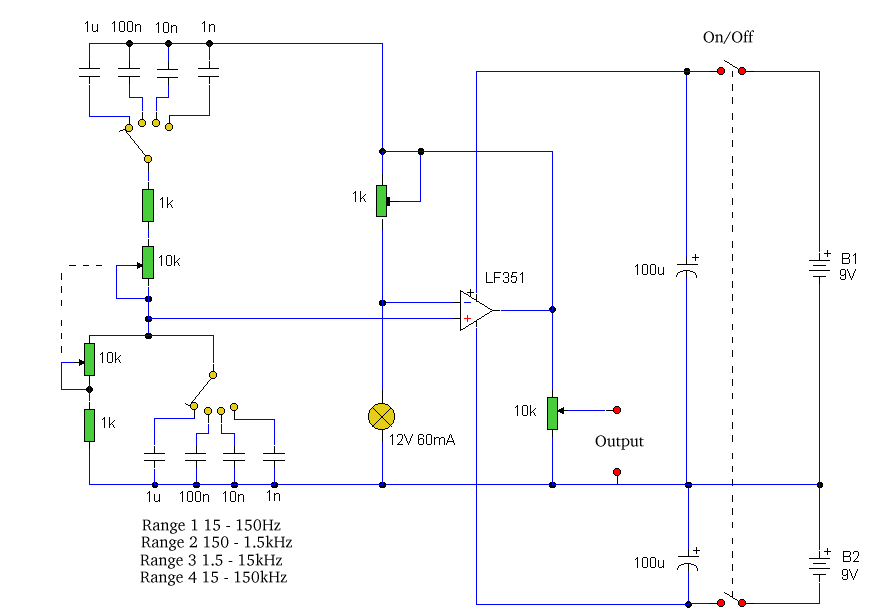Sine Wave Generator
Circuit : Andy CollinsonEmail: anc@mitedu.freeserve.co.uk
Description:
A classic Wien Bridge oscillator using an Op-Amp covering a frequency range of 15 to 150kHz in four switched steps.

Notes:
Two conditions exist for a sinusoidal oscillator. Regenerative or positive feedback, and a closed loop gain of unity. The losses in the wien feedback circuit, are such that the open loop gain of the amplifier must also exceed 29. The following link also provides the wien oscillator theory: Wien Oscillator Theory
In this circuit the gain is provided by a FET type op-amp. I have used an LF351, which may be hard to obtain, but the TL071CN or TL081CN may be used and have a faster slewing rate than the LF351. The www.maplin.co.uk order codes are RA67X and RA70M respectively. The wien network is a parallel combination of resistor and capacitor, in series with a serial R-C network. Regenerative feedback is applied from the op-amp output, to the serail R-C input and continues. Stabilization is required to prevent the otherwise uncontrolled oscillation from building up and becoming unstable.
Stability and Distortion
There are two common methods of stabilizing a wien type oscillator. A thermistor with a NTC in the series leg of the feedback loop or an incandescent lamp (with a positive temperature coefficient) in the shunt leg of the feedback loop. The bulb used here is a 6V 60mA type Maplin code BT99H. A 12 Volt bulb rated 60mA or 40mA will also work. The feedback arrangement works as follows. As a bulb heats up its filament resistance increases. This will decrease the overall gain of the amplifier, as the output signal is fed back to the input.Similarly, if the output amplitude decreased the signal appearing at the bulb would be less, its filament resistance would drop and gain would be increased. Therefore a stable output amplitude is produced. The 1k preset is adjusted for minimum distortion. Note that split supplies are used and a ganged 10k potentiometer controls frequency with a 10:1 range.
Source:www.zen22142.zen.co.uk






